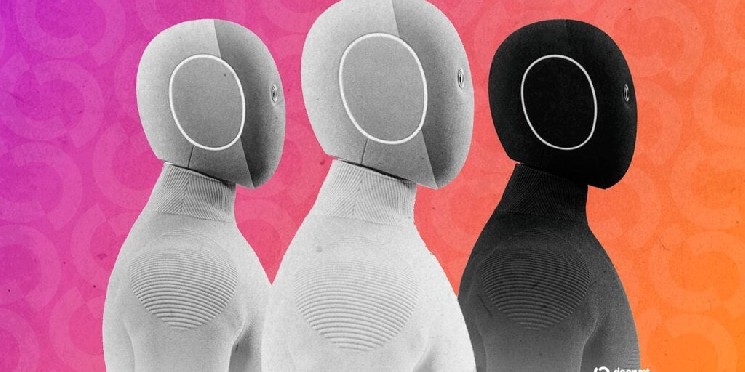The Great Home Robot Reality Check: 1X’s NEO Faces Scrutiny After Hyped Launch
Ambitious Promises Meet Skeptical Reception as $20,000 Household Robot Revealed to Be Human-Operated
In what was supposed to be a watershed moment for domestic robotics, Palo Alto startup 1X unveiled NEO this week—a sleek $20,000 household robot marketed as capable of folding laundry, loading dishwashers, and organizing shelves. The company promised a glimpse into a future where AI-powered assistants handle mundane household tasks. Instead, what followed was a sobering reminder of the vast gap between artificial intelligence marketing and technological reality.
The excitement surrounding NEO’s debut quickly deflated after Wall Street Journal technology columnist Joanna Stern revealed a critical detail: the robot’s impressive demonstrations were actually tele-operated by humans wearing VR headsets. This revelation transformed what appeared to be a breakthrough in autonomous domestic robotics into something closer to an expensive remote-controlled toy, igniting debates about product transparency, consumer expectations, and the true state of AI advancement.
“I think there’s a lot of exaggerated expectations out there, and people are not appreciating that,” UC Berkeley Professor of Industrial Engineering Ken Goldberg told Decrypt. “There’s a lot of irrational exuberance—the kindest way I could put it—around some of these things. It’s frustrating for us in the research field, because we feel that launching something like this is premature.”
Behind the Hype: What NEO Can—and Cannot—Actually Do
When Stern put NEO through its paces in a real-world demonstration, the results revealed significant limitations. Tasks showcased in 1X’s promotional materials proved painstakingly slow when attempted in person. Retrieving a water bottle from a refrigerator just ten feet away consumed over a minute, while loading a few dishes into a dishwasher stretched beyond five minutes. The robot also required frequent breaks to cool down and recharge—hardly the seamless household assistant portrayed in marketing materials.
Tech reviewer Marques Brownlee expressed skepticism on social media platform X: “This is a preorder for a humanoid home robot that will cost $20,000 or $500/month when it (maybe) ships next year, and currently is not finished. I see this as more of a hype reel for a thing that they’re hoping to be able to make someday… which is becoming SO common with products these days.”
The disconnect between promotional promises and demonstrated capabilities sparked an immediate wave of internet memes. Many satirized the concept of paying $20,000 to allow strangers behind VR headsets to wander through private homes. One viral post depicted a “tele-operated” NEO in bed with a user’s spouse, highlighting the absurdity of the arrangement and underscoring privacy concerns.
Privacy Fears and Data Collection Concerns Take Center Stage
The revelation that NEO requires extensive data collection to function properly raised immediate red flags among privacy advocates and potential consumers. 1X founder and CEO Bernt Børnich acknowledged the data-intensive nature of the product in his Wall Street Journal interview, stating: “You have to be okay with this for the product to be useful.”
While the company promises to blur people captured by the robot’s cameras and respect user-defined “no-go zones,” the fundamental business model appears to rely on constant data harvesting from private homes. Børnich framed this relationship using what he called the “Big Brother, Big Sister principle,” explaining that “Big Sister helps you; Big Brother monitors you. We’re very much the Big Sister. The more data you share, the more useful we can be, and you decide where on that scale you want to be.”
AI researcher and author Gary Marcus sees this approach as problematic. “The privacy concerns will be huge,” Marcus told Decrypt. “And the actual amount of productivity gained is likely to be negligible.” He placed NEO within a broader pattern of AI companies monetizing user data while overpromising on technological capabilities. “Robot data recorded in the home may just be the next stage in the surveillance capitalism journey,” Marcus added. “Another way to gather intimate data based on overblown promises about what can actually be delivered.”
Financial Commitment Without Clear Terms Raises Eyebrows
Beyond technological and privacy concerns, NEO’s financial model has also drawn scrutiny. Attorney Marc Hoag analyzed 1X’s subscription offering—advertised at $499 monthly—and found significant ambiguities in the terms. According to Hoag’s analysis, the $200 reservation fee doesn’t guarantee a final price or payment structure. Prospective customers won’t learn crucial details like minimum term length, cancellation policies, or return procedures until receiving an official order invitation.
“My wife and I actually really want to order this thing on a subscription basis if only for novelty and to try it out,” Hoag wrote. “But not knowing the answers to at least some of those questions above—especially subscription term, cancellation policy, and return procedures—really put a pause in our otherwise spontaneous decision tree.”
The financial commitment becomes even more questionable when considering NEO’s practical limitations. Professor Goldberg questioned whether any truly useful application exists beyond novelty value, stating: “While the idea might be appealing, it was unclear if a real market existed for it.”
This sentiment was echoed across social media platforms and forums where potential consumers expressed skepticism about paying premium prices for what appears to be experimental technology. As one Reddit user bluntly stated: “It really sounds like their AI isn’t ready, but they think—or hope—it will be by the time they start shipping units.”
Safety Concerns and the Road Ahead for Domestic Robotics
While much of the discussion around NEO has focused on its current limitations, safety concerns represent perhaps the most significant barrier to widespread adoption. A mobile, autonomous device operating in homes presents numerous potential hazards that extend far beyond privacy considerations.
As one thoughtful Reddit commenter explained: “A home robot could turn on your oven, leave water running, fall on a child or a pet, pick up a knife to prepare food, and do something unexpected that results in an injury. The list of possible safety issues is almost endless.”
Despite these challenges, some industry observers urge patience, recognizing the inherent difficulty in developing reliable domestic robots. AI for Humans podcast co-creator Gavin Purcell noted: “For now, it’s all remote operated, and it’s still struggling a little to do basic stuff. This isn’t crapping on it—it’s just that this stuff is HARD.”
Even Stern, who witnessed NEO’s limitations firsthand, maintained a measured perspective, describing the experience as “the beginning of physical AI in our lives.” She compared it to spending time with a toddler, suggesting that the value proposition isn’t immediate utility but rather investing in a learning process: “The next few years isn’t about owning a super-useful robot. It’s about raising one [and] letting it learn from your home routines and chores, all at the expense of the privacy of your inner sanctum.”
The Bigger Picture: Trust and Expectations in AI Development
The NEO launch controversy highlights a growing tension in the AI industry between marketing hype and technological reality. Professor Goldberg expressed concern that overpromising could damage public trust: “If you get a lot of hype, there could be a backlash, and people could really lose confidence in robotics altogether.”
As companies race to commercialize AI and robotics technologies, the temptation to present prototypes as finished products grows stronger. However, as NEO demonstrates, premature launches risk undermining consumer confidence and raising legitimate questions about the industry’s transparency.
Whether 1X can deliver on its promises when NEO begins shipping remains to be seen. What’s certain is that the path to truly autonomous domestic robots remains longer and more complex than promotional materials suggest. As potential customers weigh the $20,000 investment against demonstrated capabilities, they must decide if they’re purchasing a revolutionary household assistant or merely funding the research and development for one that might someday exist.
For now, NEO serves as a compelling case study in the challenges of bringing advanced robotics to market—and a reminder that in the rapidly evolving field of artificial intelligence, maintaining realistic expectations may be as important as the technology itself.












